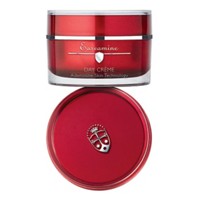Advertisement
Grab your lab coat. Let's get started
Welcome!
Welcome!
Create an account below to get 6 C&EN articles per month, receive newsletters and more - all free.
It seems this is your first time logging in online. Please enter the following information to continue.
As an ACS member you automatically get access to this site. All we need is few more details to create your reading experience.
Not you? Sign in with a different account.
Not you? Sign in with a different account.
ERROR 1
ERROR 1
ERROR 2
ERROR 2
ERROR 2
ERROR 2
ERROR 2
Password and Confirm password must match.
If you have an ACS member number, please enter it here so we can link this account to your membership. (optional)
ERROR 2
ACS values your privacy. By submitting your information, you are gaining access to C&EN and subscribing to our weekly newsletter. We use the information you provide to make your reading experience better, and we will never sell your data to third party members.
Intellectual Property
How a UCSB chemist stood up to L'Oréal in an IP-theft case
Jury award compensates the start-up firm Olaplex for losses over hair protection knockoff
by Marc S. Reisch
August 16, 2019

A US district court jury in Delaware has ordered French cosmetics giant L’Oréal to pay $91 million for stealing the formula for Olaplex’s Bond Multiplier, a favorite of celebrities like Khloé Kardashian and Taylor Swift because it protects hair from damage during bleaching and color treatments.
Following a trial held earlier this month, the jury found L’Oréal guilty of trade-secret theft, patent infringement, and breach of contract. It ordered L’Oréal to pay Olaplex—a start-up based on the research of two University of California, Santa Barbara (UCSB) chemists—more than $22 million for each of the first two offenses, and close to $47 million for the third offense.
In a press statement, L’Oréal vowed to appeal the decision and said it expects “to prevail on all counts.” The cosmetic firm added that it is contesting Olaplex’s patents before the United States Patent & Trademark Office and the federal appeals court and expects “future rulings to invalidate” the Olaplex patents. L’Oréal also asserted that its own hair treatment technology, in products such as Redken pH-Bonder and Matrix Bond Ultim8, “was developed independently by L’Oréal research teams.”

UCSB chemistry professor Craig Hawker, who developed the technology for Olaplex along with former student Eric Pressly, tells C&EN that the case is one of a big firm bullying a start-up. “L’Oréal picked on the wrong people,” he says. Since Olaplex’s product was successful early on, the small firm, unlike many start-ups that struggle to gain traction, had the means to take the fight with L’Oréal to court, he explains.
The two scientists developed the Olaplex hair repair technology in Pressly's garage. The first ingredient they discovered was bis-aminopropyl diglycol dimaleate. According to Olaplex, it keeps bleaching and coloring agents from breaking disulfide bonds in the hair.
But the lawsuit focused on patents the two scientists developed covering alternative hair protectors including maleic acid. Hawker says they patented alternatives as a way to guard their original formulation from competitors who might come up with workarounds.
Hawker credits the 11 years he spent as a researcher at IBM Research - Almaden for the business smarts to protect the patent he and Pressly first developed. “It’s good to be an academic who has experience with corporate culture,” he says.
But Hawker also says “I would rather have collaborated with L'Oréal as we started to do rather than waste all this time” in legal wrangling. L’Oréal negotiated to buy Olaplex in 2015, according to Olaplex’s 2016 complaint against L’Oréal. As talks advanced, L’Oréal signed a confidentiality agreement giving it access to Olaplex’s proprietary information.
But negotiations fell apart. Soon thereafter, L’Oréal created knockoffs hoping to recreate Olaplex’s success, says the complaint. Hawker says that L’Oréal’s behavior “is not acceptable for a company touting respect for research and innovation.”
In its statement, L’Oréal countered that its “business is guided by an unwavering code of ethics, which respects and invites fair competition, as we believe it drives everyone in the industry to develop better products and services to give our customers the choice they desire and deserve.”
L’Oréal’s statement also points out that the jury verdict only applies to the US market. However Olaplex has already tangoed with L’Oréal in another market. In June 2018, Olaplex won a ruling from a British court that determined L’Oréal had violated an Olaplex hair treatment patent. At the time, L’Oréal appealed that ruling and Olaplex sought an injunction barring sales of L’Oréal’s competing product.




Join the conversation
Contact the reporter
Submit a Letter to the Editor for publication
Engage with us on Twitter